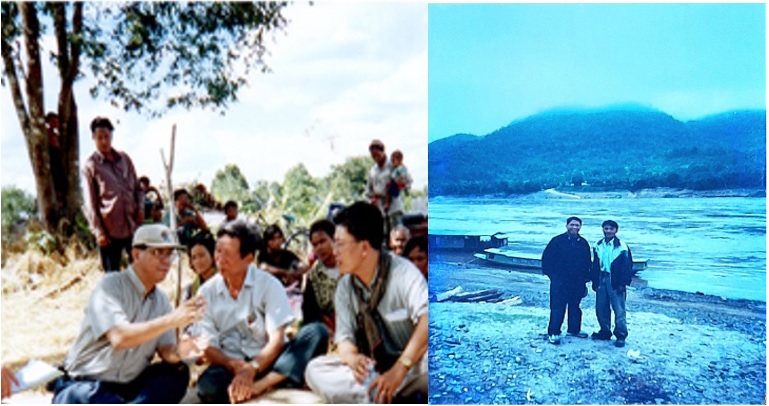
Ideas that concerned us … inspired us (2000-2023)
- Both countries are blessed by the mighty Mekong River.
- However, Cambodia, though flat, has inherent soil fertility issues (The exception are the areas fed by the mighty Ton Le Sap Lake). Laos has a mountainous topography and so prone to soil erosion
- Agrobiodiversity is high, (especially in Laos) Indigenous practices for soil fertility management exist; many non-government initiatives show viable ways to address them
- Many farming communities are naturally also forest- custodians
- Climate change issues accentuate (worsen) the long-known land degradation issues
- There is deep tension between providing for access to land and community forests as economic tools for rural communities and the desire for Agri sector export output (via Economic Land Concessions)
- Steady progress in mainstreaming Community Forestry led and the increased role of local authorities
Remarkable Communities / Pioneering Communities
- Communities in the flooded forests in Siem Reap Cambodia, rainfed farmers along the Mekong and in Prek Thnout, Kampong Thom, community forestry holders in Kratie, Mondulkiri;
- mountain ethnic farmers of Northern Sayaboury, Xieng Khouang, and Savanakhet Lao PDR
Catalytic projects that helped study and model the way
- IFAD – ICRAF Technical and Institutional Innovations Project,
- DANIDA Process and Benefit study of NRM decentralization
- UNDP SLM Cambodia Project,
- Community Forestry Projects of RECOFTC; OXFAM GB; Civis Mudi; ASEAN – SDC; and NTFP EP respectively
- GEF UNDP Prek Thnout Watershed project
- IUCN Biodiversity Planning Project, and UNDP Agri CCA project in Lao PDR,
- USAID RDMA Biodiversity Review and UNDP Asia Pacific Ecosystems and Biodiversity review
My field notes








Thought leaders and fellow travelers
Meas Pyseth, SLM PTT Team, Ly Visal, Iech Thea, Chum Sovanny, Tuy Samram, xxx, Nissay, Chong Ear, MAFF Soils Team; Edwin Payuan, Paulo Pasicolan, Athena Custodio
Insights
- Many good land management practices already demonstrated. GDP. But their spread is slow. It seems that social/institutional solutions need to precede the spread of technical solutions
- The GDP enhancing prospects for agribusiness and commodity driven are very high but issues on land allocation, social and environmental foot prints need equal attention. There is active research and advocacy on the above, sometimes, with lives at stake.
- Out of the box initiatives are increasingly needed that also engage agribusiness firms and the latter’s financing institutions — towards responsibility through transparency
- How do we manage the sectoral “silos’ and address the overlapping conventional issues as environmental/land degradation, economic driving forces and climate change?
Leave a reply